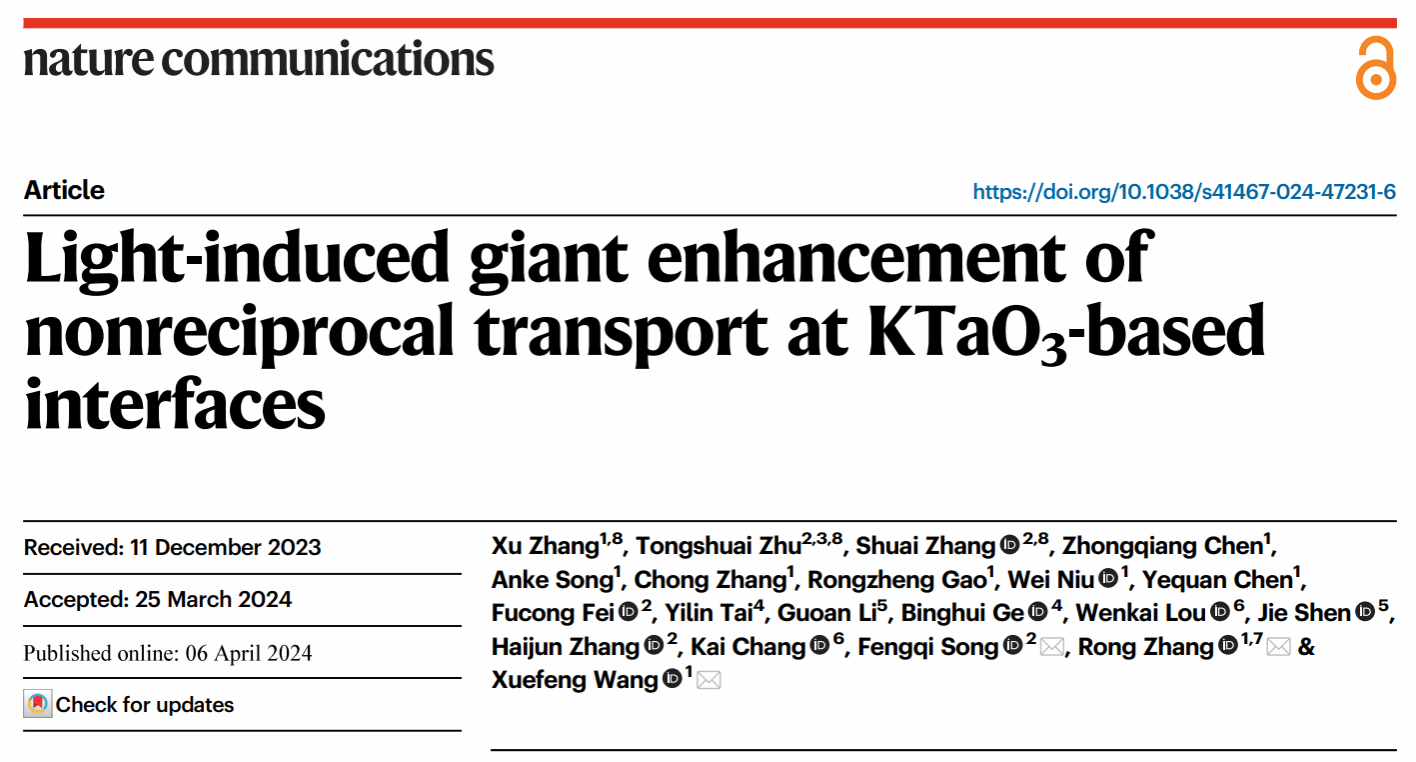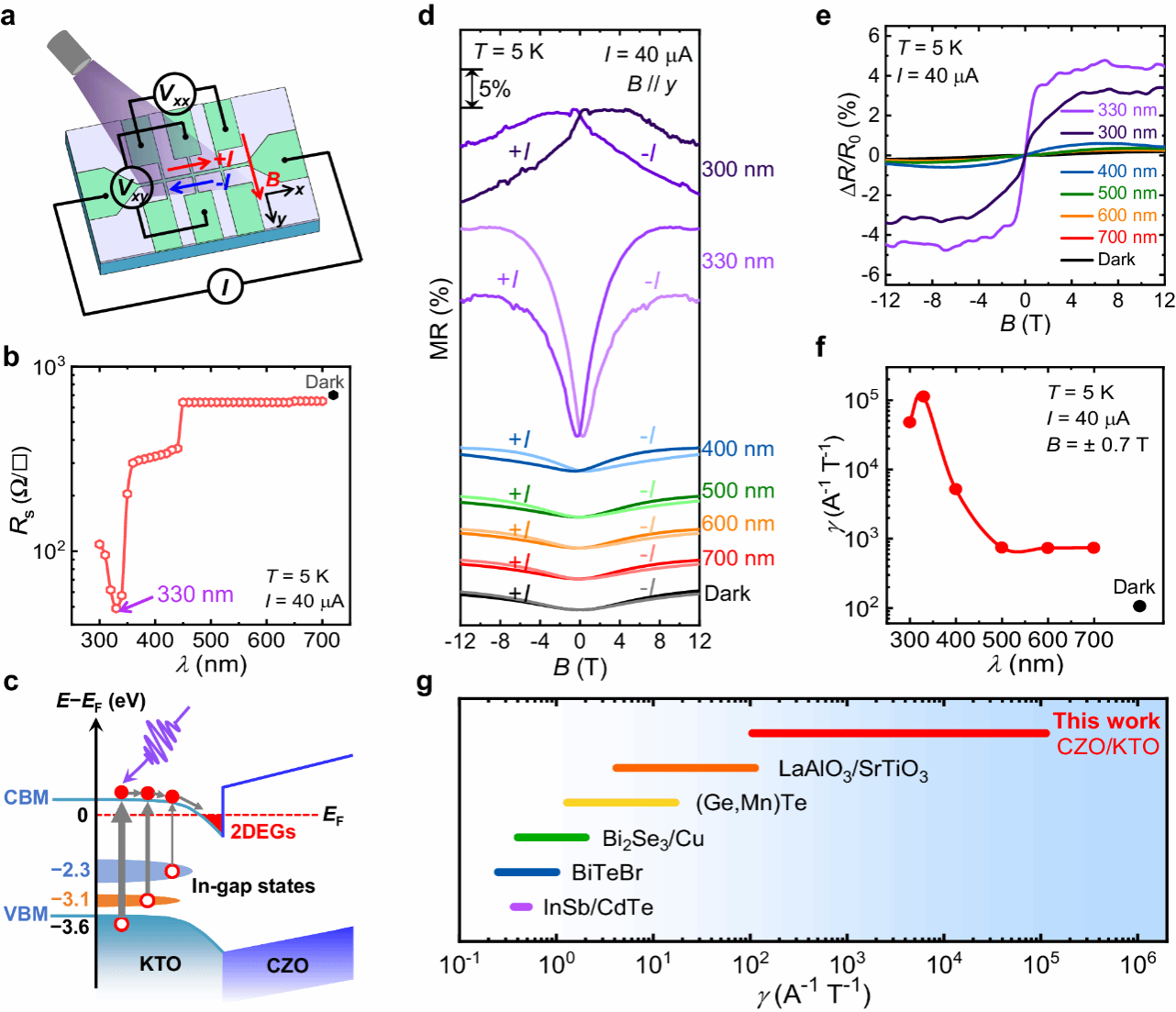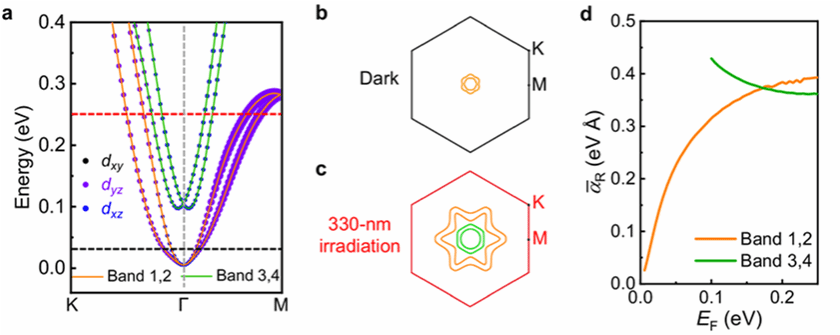Recently, the research team led by Prof. Zhang Rong, Academician of the Chinese Academy of Sciences, and Prof. Wang Xuefeng from the School of Electronic Science and Engineering at Nanjing University, in collaboration with multiple research teams, have remarkably manipulated the nonreciprocal charge transport of the two-dimensional electron gases at the KTaO3 (111)-based semiconducting interfaces with strong Rashba spin-orbit coupling through the photocarrier transfer process. The nonreciprocal transport coefficient experiences the giant increase with three orders of magnitude up to 105 A−1 T−1.
These interesting results were published in the reputed journal of Nature Communications on April 6, 2024 (https://doi.org/10.1038/s41467-024-47231-6), which is entitled “Light-induced giant enhancement of nonreciprocal transport at KTaO3-based interfaces.” PhD student Zhang Xu, Dr. Zhu Tongshuai and Dr. Zhang Shuai contributed equally to this work. The corresponding authors are Prof. Wang Xuefeng, Prof. Zhang Rong and Prof. Song Fengqi .

The abstract of the paper is as following:
Nonlinear transport is a unique functionality of noncentrosymmetric systems, which reflects profound physics, such as spin-orbit interaction, superconductivity and band geometry. However, it remains highly challenging to enhance the nonreciprocal transport for promising rectification devices. Here, we observe a light-induced giant enhancement of nonreciprocal transport at the superconducting and epitaxial CaZrO3/KTaO3 (111) interfaces. The nonreciprocal transport coefficient undergoes a giant increase with three orders of magnitude up to 105 A−1 T−1. Furthermore, a strong Rashba spin-orbit coupling effective field of 14.7 T is achieved with abundant high-mobility photocarriers under ultraviolet illumination, which accounts for the giant enhancement of nonreciprocal transport coefficient. Our first-principles calculations further disclose the stronger Rashba spin-orbit coupling strength and the longer relaxation time in the photocarrier excitation process, bridging the light-property quantitative relationship. Our work provides an alternative pathway to boost nonreciprocal transport in noncentrosymmetric systems and facilitates the promising applications in opto-rectification devices and spin-orbitronic devices.

Figure 1. Light-induced giant enhancement of nonreciprocal charge transport at the CaZrO3/KTaO3 interfaces.

Figure 2. Theoretical analyses for the light-induced enhancement of nonreciprocal transport.
Source: School of Electronic Science and Engineering
Correspondent: Wang Xuefeng